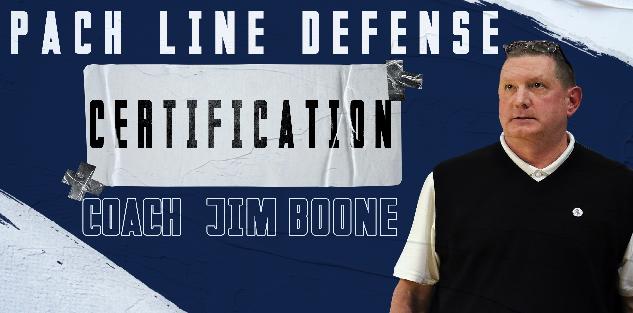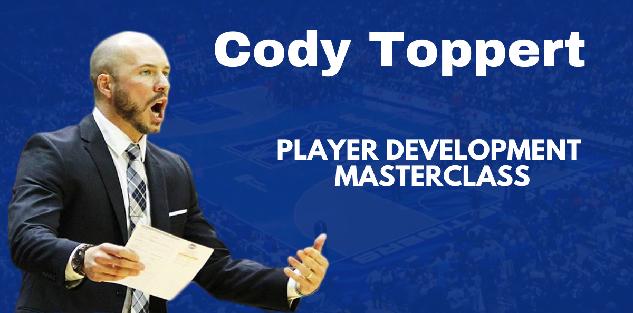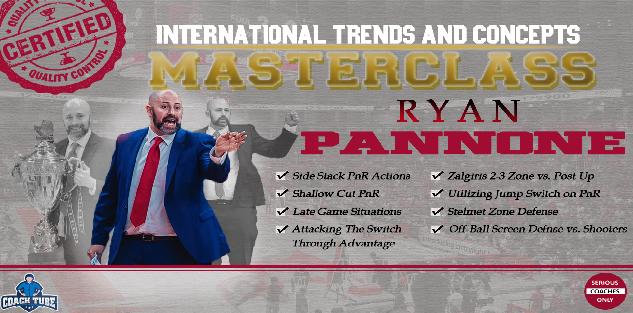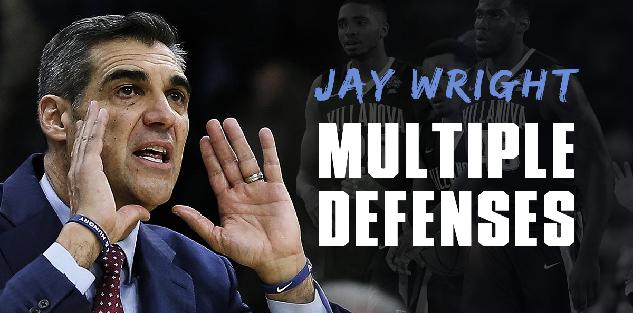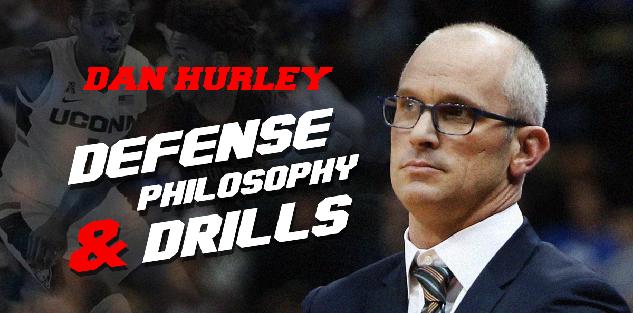Featured courses
- Two Great Game Situational Workouts For the Basketball Offseason by Grant Young
- Two Reads Basketball Players Must Understand Before Executing the Ball-Screen by Grant Young
- Two of LSU Coach Kim Mulkey’s Game-Winning Inbounds Plays by Grant Young
- Three Effective Early-Season Defensive Basketball Drills by Grant Young
- Four Essential Tips For Basketball’s 1-3-1 Zone Defense by Grant Young
- Four Zone Defense Drills to Strengthen Your Team by Grant Young
- How to Beat the Three Most Common Pick and Roll Coverages by Grant Young
- Two Drills to Improve Shooting at the Start of the Basketball Season by Grant Young
- Core Basketball Principles That Dallas Mavericks Coach Sean Sweeney Teaches by Grant Young
- Three Competitive Shooting Drills For Your Basketball Team by Grant Young
- How To Teach The ‘I’ Generation of Basketball Players by Grant Young
- Three Elite Drills to Begin a Basketball Practice With by Grant Young
- How to Build a Championship-Winning Basketball Team Culture by Grant Young
- Two of Texas Women’s Basketball Coach Vic Schaefer’s Tips For Team Culture by Grant Young
- Atlanta Dream WNBA Coach Brandi Poole’s Four Sets for Secondary Offense by Grant Young
- NC State Basketball Coach Brett Nelson’s 4 Crucial Point Guard Qualities by Grant Young
- Kentucky Coach Mark Pope’s Five Guard Rules For Offense by Grant Young
- McNeese State Basketball Coach Will Wade’s 4 Core Pillars by Grant Young
- 4 Tips To Instantly Improve Your Free Throw Shooting by Tyler Linderman
- Assemble a Championship-Caliber Basketball Rotation by Brandon Ogle
- Two of UConn Coach Dan Hurley’s Key Defensive Drills by Grant Young
- Four Post Moves All Basketball Forwards Should Have In Their Bag by Grant Young
- Four of Baylor Coach Nicki Collen’s Midseason Pick and Roll Adjustments by Grant Young
- WNBA Legend Sue Bird’s Two Tips For Attacking on Offense by Grant Young
- Houston Coach Kelvin Sampson’s Three Keys for Building a Basketball Program by Grant Young
- Two of Tom Izzo’s Top Michigan State Defensive Drills by Grant Young
- Four of Olympic Gold Medalist Coach Mechelle Freeman’s Relay Race Strategies by Grant Young
- Three Key Strategies Will Wade Uses to Build a Dominant Team by William Markey
- Five UConn Huskies Men’s Basketball Plays That You Can Use by Grant Young
- Three Tips for Maintaining Team Culture at the End of a Basketball Season by Grant Young
- Three Dribble Drive Motion Drills to Teach Your Basketball Team by Grant Young
- Three Dribbling Drills For Non-Primary Ball Handlers by Grant Young
- Four Advanced Ball Handling Drills For Basketball Guards by Grant Young
- Three Tips to Sharpen Your Post Player’s Footwork in Basketball by Grant Young
- These Three Pick and Roll Drills Are Crucial For Any Ball Screen Offense by Grant Young
- Three Closeout Drills to Improve Basketball Shooting Defense by Grant Young
- Three Tips to Perfect the Packline Defense in Basketball by Grant Young
- Four Keys to Executing the Read and React Offense in Basketball by Grant Young
- Three Tips to Develop Elite Basketball Shooters by Grant Young
- Three Crucial Keys to Executing the 5 Out Offense in Basketball by Grant Young
- These Three Offensive Sets Will Help You Beat Any Zone Defense by Grant Young
- Three Transition Basketball Drills To Play With More Pace by Grant Young
- Three 5 Out Offense Drills Any Basketball Coach Can Use by Grant Young
- Four Vital Techniques for a Motion Offense in Basketball by Grant Young
- Three Baseline Inbounds Plays To Win Your Basketball Team Games by Grant Young
- Four Drills For Sharpening the European Ball Screen Offense by Grant Young
- Three Positioning Tricks For a Basketball Zone Offense by Grant Young
- Three Rules to Perfecting Basketball's Lock Left Defensive System by Grant Young
- UCLA WBB Coach Cori Close’s Two Keys to Winning the Mental Game by Grant Young
- Four of Alabama Coach Nate Oats’ Favorite Basketball Drills by Grant Young
- Three Ways To Turn Transition Offense in Basketball Into Points by Grant Young
- Three Drills to Master Basketball's Pack Line Defense by Grant Young
- Three Transition Defense Drills to Halt Fast Breaks by Grant Young
- Four Offensive Rebounding Drills to Win Second Possessions by Grant Young
- 4 Defensive Technique Drills from Boston Celtics Assistant Coach Brandon Bailey by Marek Hulva
- 5 Drills to Improve Ball Handling by Tyler Linderman
- 13 FUNNY BASKETBALL GIFS by Alex
- BASKETBALL SPEED AND AGILITY: 8 QUESTIONS FOR COACHTUBE EXPERT RICH STONER by Jaycob Ammerman
- Defensive Strategies for Basketball by Ryan Brennan
- 4 Keys To Turning Your Program Into Championship Contender By Dallas Mavericks Coach Sean Sweeney by Marek Hulva
- 5 Components to Creating a Winning Basketball Program by Justin Tran
- Guide to Becoming a Lethal Scorer in Basketball by Justin Tran
- Zone Defense In the NBA Eastern Conference Finals by James Locke
- Mastering Court Mobility: Tips for Effective Movement in Basketball by Justin Tran
- 5 Basketball Shooting Drills: How to Develop a Sharpshooter by James Locke
- 6 Points of Emphasis for a Successful 5 Out Offense by Jaycob Ammerman
- Effective and Efficient Methods to Practice During the Basketball Season by Justin Tran
- Three Great Passing Drills From a Basketball Coaching Legend by Grant Young
- 7 Principles For Perfecting the Princeton Offense in Basketball by Grant Young
- How to Replicate A Modern NBA Offense by Grant Young
- Three Great Two-Ball Dribbling Drills For Basketball Development by Grant Young
- Two Rebounding Drills to Win Your Basketball Team Championships by Grant Young
- How to Improve Your Basketball Team’s Defense With the Shell Drill by Grant Young
- How Baylor Basketball’s Scott Drew Develops Elite Guard Play by Grant Young
- Off-Ball Movement Tips and Strategies: Lessons From the NBA Finals by James Locke
- Player Development: Scott Drew’s Tips for Producing NBA Guards by James Locke
- How to Execute a Spread Offense in Basketball by Grant Young
- Four Quality Quotes From Four Final Four Coaches by Grant Young
- A Guide to the Pack Line Defense by Alex Martinez
- 3 Defensive Build Up Drills to Improve Team Basketball Defense by Grant Young
- Battle of Two Great Coaches: Best Plays from the NBA Finals Contenders by Justin Tran
- 10 Creative Ways Athletic Programs Can Use a Video Board to Raise Money by Coach Williams
- How to Use 3 on 3 to Improve Your Basketball Team by Grant Young
- How to Defend the Pick and Roll by Grant Young
- Mastering Basketball Defense: Techniques, Drills, and Strategies for Success by Justin Tran
- Three Tips From The Coach Who Developed Giannis Antetokoumnpo by Grant Young
- 2023 NBA Draft: Skills and Technique from Top Prospects by Justin Tran
- From College to the Pros: Transitioning the Dribble Drive Offense by Justin Tran
- Positionless Basketball: Redefining Roles on the Court by Justin Tran
- Revolutionize Your Offense: Proven Concepts to Elevate Your Basketball Game by Justin Tran
- 5 Essential Fastbreak Drills Every Basketball Coach Should Know by James Locke
- How to Run a Circle Offense in Basketball by Grant Young
- Game-Changing Strategies: ATO Plays in the EuroLeague and Olympics by Justin Tran
- How to Stand Out at Basketball Tryouts by Grant Young
- How to Improve Your Basketball Team’s Transition Defense by Grant Young
- Indiana Fever GM Lin Dunn’s Two Keys For Women’s Basketball Coaches by Grant Young
- Strength Training Strategies Every Basketball Player Should Have by Grant Young
- A WNBA Basketball Coach’s Four Priorities In Transition Defense by Grant Young
- Three Adjustments to Make When Your Basketball Offense Isn’t Working by Grant Young
- Three Pillars to Applying Defensive Pressure on the Basketball Court by Grant Young
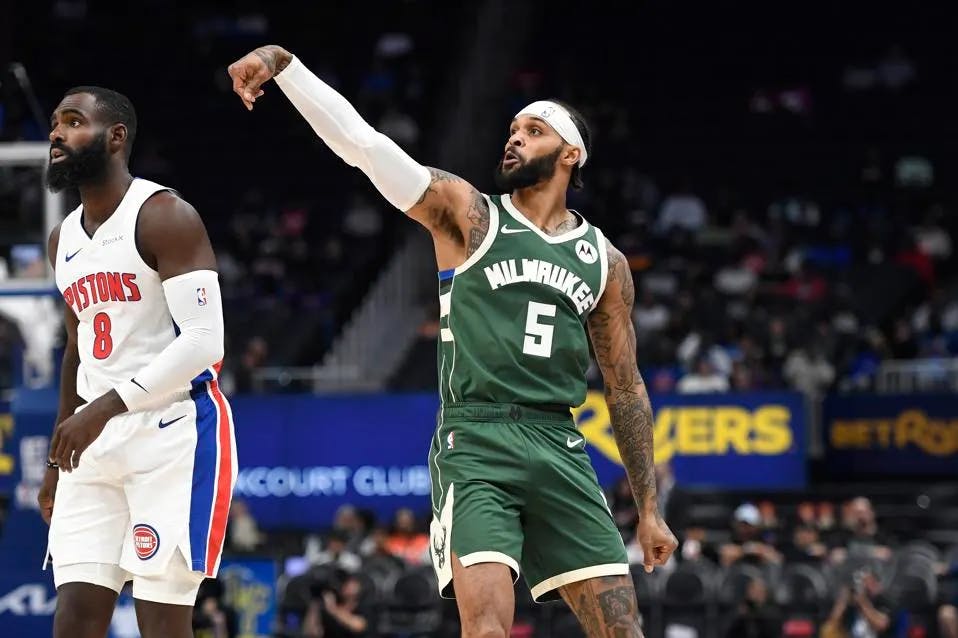
Three Crucial Keys to Executing the 5 Out Offense in Basketball
- By Grant Young
The 5 out offense has become one of basketball's most common offenses due to its ability to spread the floor and create open driving lanes and passing angles.
By positioning all five players outside the three-point line, the 5 out offense forces the defense to extend, opening up space near the basket. This offensive strategy also allows for quick ball movement, constant player movement, and multiple scoring options, making it difficult for the defense to anticipate and react effectively. There’s also the fact that the 5 out offense is well-suited for teams with versatile and mobile big men who can shoot from the perimeter, adding an extra dimension to the team's offensive capabilities.
All of which is to say that many coaches consider the 5 out offense the perfect solution for playing modern basketball, where spacing, ball movement, and outside shooting are highly valued.
Some basketball coaches believe they can execute the 5 out offense with only a basic understanding of its principles. However, successful implementation of the 5 out offense requires more than just a surface-level understanding.
Coaches must comprehend the intricacies of spacing, player movement, timing, and decision-making within the system. Without a deep understanding of these aspects, teams may struggle to effectively execute the offense, leading to stagnant possessions, poor shot selection, and an overall lack of offensive cohesion.
While the 5 out offense offers numerous benefits, coaches must invest time in studying and teaching its nuances to ensure its successful implementation on the court. That’s why we’ve pulled lessons from basketball coaches who’ve learned to master the 5 out, providing with you tips that will make a world of difference when you instill the 5 out into your own program.
Cody Toppert - Run Wide
Cody Toppert is currently an assistant coach of the LSU men’s basketball team. Toppert came to LSU in 2022 after three seasons at Memphis, where he played a large role in game planning and created and managed the team’s analytics program which was among the most advanced in college basketball. Toppert joined Memphis after serving as an assistant coach and director of player development for the NBA’s Phoenix Suns.
Coach Toppert’s ‘5 Out System and Actions’ course discusses why players running out wide in transition is crucial to the 5 Out offense’s success.
He explains that the wing player who’s in transition should be seeking the nearest sideline and running wide with their eyes on the basketball, trying to find a way to get themselves open for the ball handler. While this will likely create open shots behind the three-point line, it will also open up the middle lane for either the ball handler to drive into if they see a lane or for the big man to run into and receive a pass if they’re in front of the break.
Coach Toppert says that “filling the deep corners is one of the most underrated things to playing 5 Out and playing fast.” He explains how too many coaches worry about shooting too early in the shot clock, as shooting percentage decreases when there’s less time on the shot clock. For this reason, if a player gets open in the corner early in the shot clock, they should always be receiving a pass and taking an open shot.
Randy Sherman - Half Court Positioning
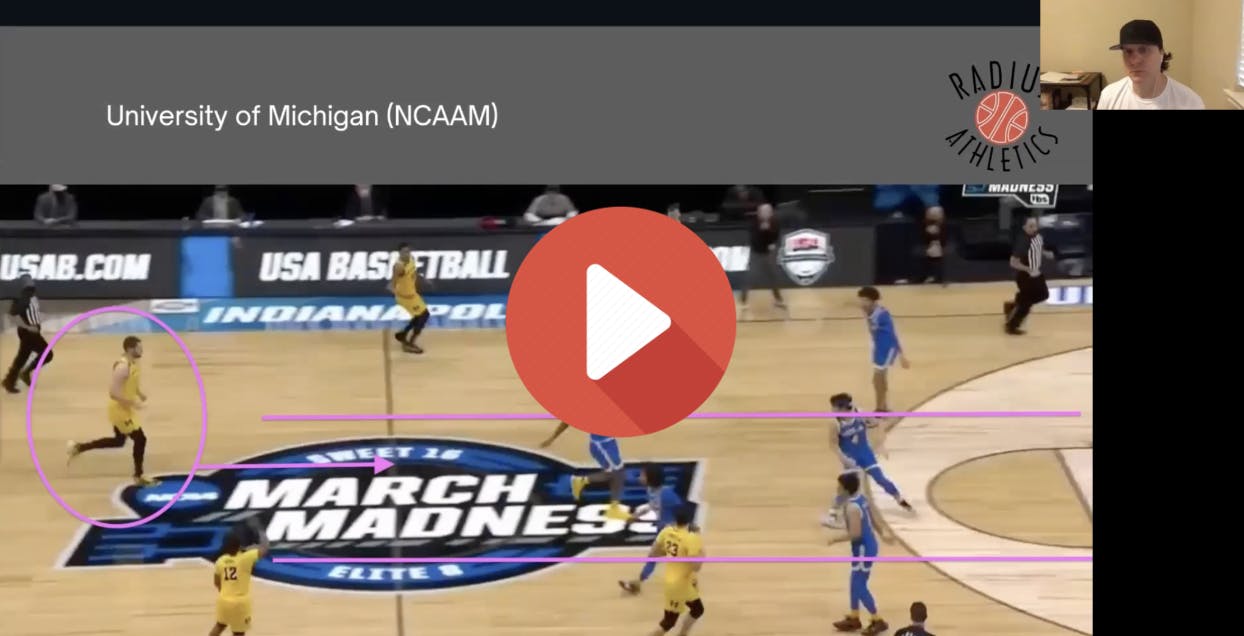
Randy Sherman is an experienced coach with an illustrious history of working in a lot of different areas of the sports industry. The main facet that he specializes in is consulting for basketball coaches and continuing to mentor them.
In his ‘Five-Out Early Offense’ course, Coach Sherman conveys that the money shot in a 5 Out offense is at the corners. From there, he wants his wings at a little bit higher than the free throw line extended, because their being any lower will create a logjam with them and the player in the corner, which negates the benefits of employing the 5 out.
A team should always strive to replicate the 5 Out formation while in transition as well, at least as their offensive attack permits it. If the big man is trailing last, they should always be going down the middle to either set a screen, position themselves in the paint, or make some other move to get the 5 Out in motion.
A great way for coaches to instill where players should “show up” on the court in the 5 Out offense is by literally putting squares of tape on the court to show where players should look to be lining up.
Matt Lewis - Post Touches
Matt Lewis is the head coach of the UW-Oshkosh men’s basketball program. Coach Lewis has compiled a 111-40 record in his six seasons at UW-Oshkosh, in which the Titans have made four trips to the NCAA Division III Championship, won the WIAC regular season title three times, and secured two league postseason championships. In 2019 the Titans won the NCAA Division III National Championship.
Coach Lewis’ ‘Matt Lewis - How To Run 5 Out With Any Personnel’ course conveys that he does not have specific post spacing when a player enters the post within the 5 Out. But when a post player does receive a touch, the key is to exercise patience. They must let their teammates clear out, get into other positions, and set screens along the perimeter in order to get themselves open.
Of course, if the post player seems like they have an advantage on the block over their defender, they should get to work and try to score an easy basket. But if they aren’t feeling capable of executing an attack then they must wait and trust in the 5 Out offense to reveal to open player.

